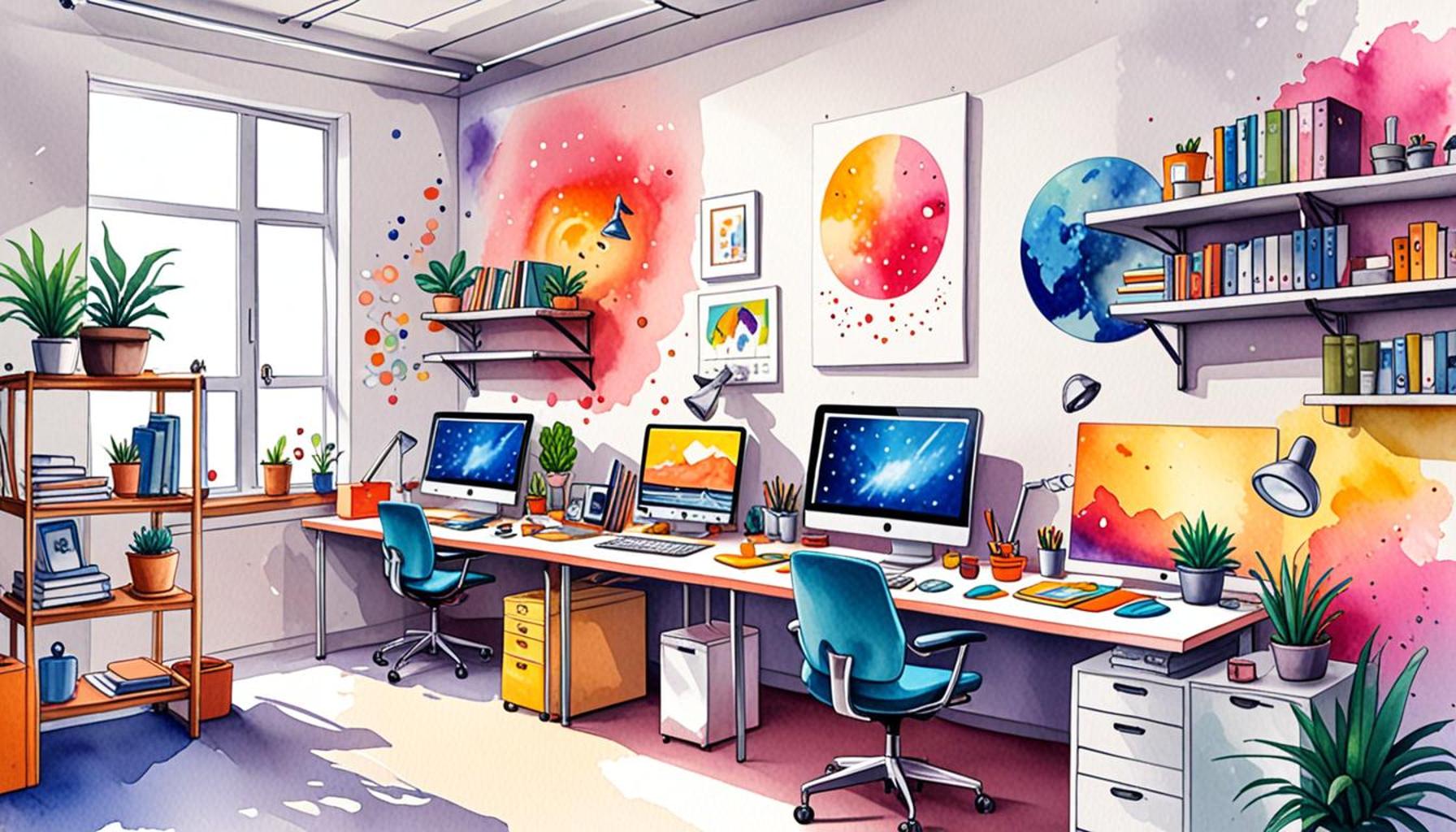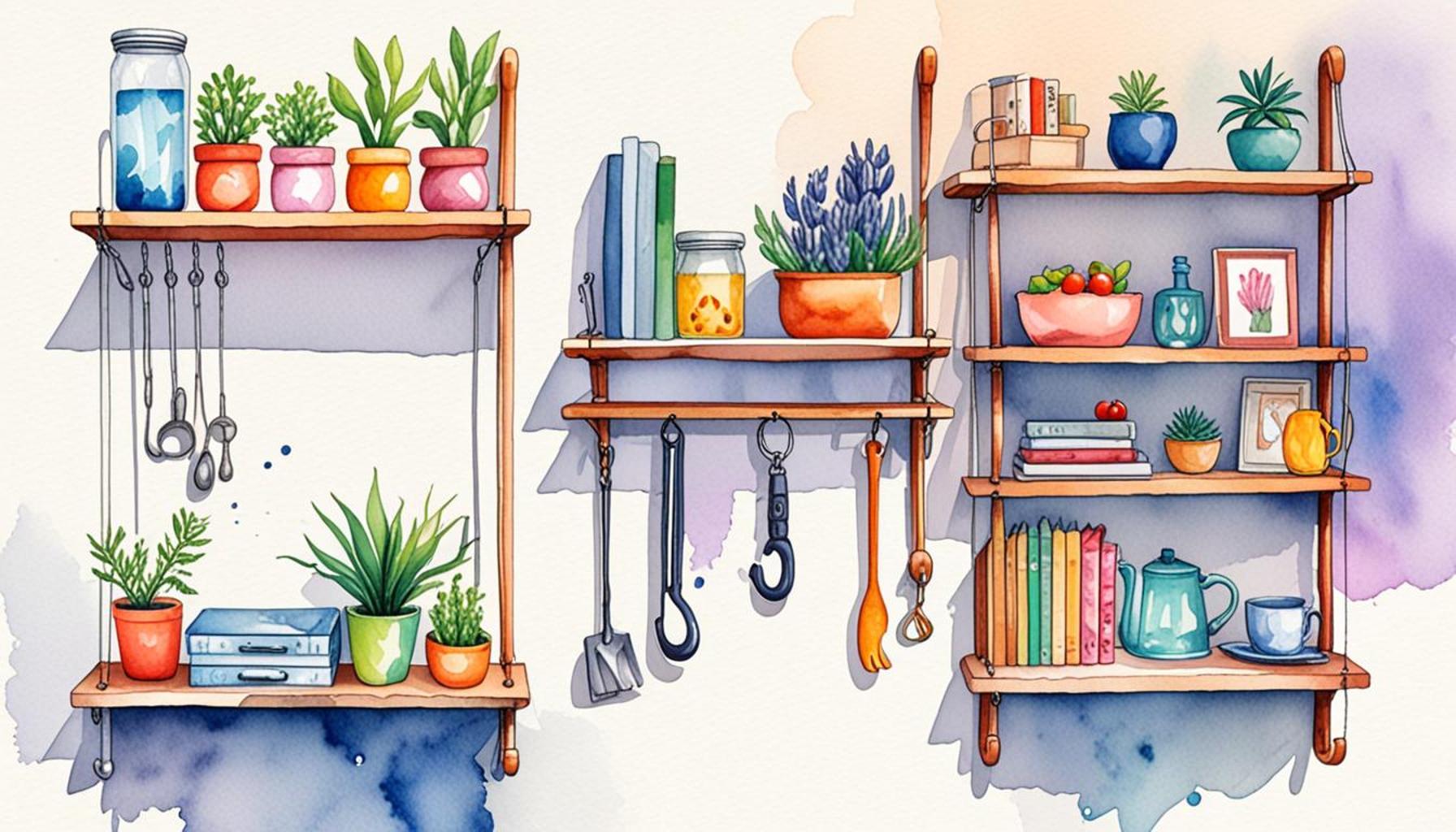Colors and Lighting: The Impact of Design on Space Perception in Minimalist Environments

Understanding Minimalist Spaces
In the realm of interior design, the interplay between colors and lighting profoundly influences our perception of space. This dynamic is particularly potent in minimalist environments, where each element is carefully curated to create a sense of harmony and balance. The intention is not just aesthetic; minimalist design is about enhancing the emotional experience and functionality of a space.
Why Colors Matter
Colors can evoke emotions and shape experiences in surprising ways. In minimalist design, the impact of color becomes even more pronounced, serving as a powerful tool to communicate specific feelings and moods. For instance:
- Cool Colors: Shades of blue and green create a sense of tranquility. They are often used in bedrooms and wellness spaces to promote relaxation, playing on associations of nature and serenity.
- Warm Colors: Colors such as yellow and red inject energy and warmth into a space. These hues are often strategically placed in social areas like kitchens and living rooms to foster a lively atmosphere, encouraging social interactions and creativity.
- Neutral Tones: Soft whites, beiges, and grays enhance the sense of spaciousness and allow for seamless blending of different interior elements. Often used in contemporary homes, these colors create a blank canvas, letting the furniture and decor stand out without overwhelming the senses.
The Role of Lighting
The role of lighting cannot be overstated; it further accentuates the effects of colors, influencing how they are perceived and how they affect our mood. Consider the following aspects:
- Natural Light: Maximizing natural light through large windows or skylights enhances colors, resulting in a vibrant atmosphere. Studies have shown that exposure to daylight can significantly boost mood and productivity, making it an essential component in both residential and commercial designs.
- Artificial Light: The choice of artificial lighting—whether it be warm or cool in tone—directly impacts the mood within a space. Warm-toned bulbs can create an inviting environment, while cooler tones may be more suited for workspaces, enhancing alertness and concentration.
- Layered Lighting: Employing various sources of light, such as ambient, task, and accent lighting, adds depth and interest to minimalist spaces. Each type of lighting serves a distinct purpose, allowing the designer to create versatile settings that can adapt to different activities and times of day.
As we delve deeper into the impact of design on space perception, it’s evident that these elements work in concert to create environments that feel larger, more inviting, and ultimately more functional. From compact city apartments to expansive commercial spaces, the principles of minimalist design can transform even the smallest areas into captivating experiences. By understanding and utilizing colors and lighting effectively, designers can craft spaces that not only look beautiful but also resonate deeply with those who inhabit them, making the art of minimalist living both a practice in aesthetics and an exploration of emotional well-being.
DISCOVER MORE: Click here to transform your workspace

Exploring the Psychology of Colors in Minimalist Design
The psychological effects of color on human behavior are well-documented and provide compelling insight into how we interact with our environments. In minimalist environments, where simplicity reigns supreme, the strategic use of color can substantially influence our mood and perception of space. Understanding these nuances is key for designers aiming to create spaces that feel open and inviting.
Colors as Emotional Catalysts
Every color can elicit a different emotional response. In minimalist design, where every detail counts, these responses become even more significant. Here’s how various colors can affect our feelings and perceptions:
- Blue: Often associated with calmness and tranquility, blue can make a space feel more expansive and serene. It’s perfect for bedrooms or relaxing corners where peace is desired.
- Green: Symbolizing growth and renewal, green introduces a refreshing ambiance. It’s often utilized in spaces that bring the outdoors in, creating an organic feel that can enhance one’s connection with nature.
- Yellow: This vibrant hue can stimulate feelings of happiness and energy. Used sparingly in minimalist design, yellow can draw attention to specific areas, making them feel alive and engaging.
- Gray: As a neutral tone, gray balances and grounds a space. It offers a sense of sophistication while allowing other design elements to shine without overwhelming the senses.
Research has shown that the application of these colors can significantly change one’s mood and enhance creative thinking. For instance, a review of psychological studies indicated that exposure to cooler tones can elevate focus, making them a logical choice for offices or studying areas. Conversely, warmer colors can stimulate social interactions, thereby transforming kitchens and living rooms into lively gathering spots.
The Interaction of Color and Light
Without lighting, colors appear differently, and their impact can be altered dramatically. In a minimalist design where the goal is to enhance space perception, the effective use of lighting can augment the effects of color:
- Dimmed Lighting: Creates a cozy, intimate atmosphere, perfect for socializing or unwinding after a long day, highlighting warm colors and soft textures.
- Bright, White Light: Promotes alertness and clarity, making it ideal for workspaces. It brings out the vibrancy of cool colors like blue and green, enhancing their invigorating properties.
- Colored LED Lighting: Offers versatility and control, allowing homeowners to adjust ambiance and mood simply by changing the hue. For example, a soft pink light can create a warm, welcoming feeling in dining areas.
In summary, the interplay between colors and lighting in minimalist design is a vital element in determining how space is perceived. By strategically choosing colors and utilizing lighting effectively, designers can create environments that not only look visually appealing but also resonate deeply with their inhabitants. This careful curation can transform even the most subdued spaces into visually compelling experiences that evoke emotion and enhance functionality. As we explore further, it will become clear how this synthesis of color and light can redefine the very essence of minimalist living.
| Advantages | Impact on Space Perception |
|---|---|
| Enhanced Ambiance | Specific color palettes combined with lighting strategies can dramatically alter the mood of a space, making it feel more inviting or tranquil. |
| Increased Spatial Awareness | Utilizing lighter shades and well-placed lighting encourages a sense of openness, helping to maximize the perception of available space. |
| Focus and Productivity | Appropriate color choices and natural lighting can improve focus, leading to enhanced productivity, especially in minimalist workspaces. |
Exploring the relationship between colors and lighting within minimalist environments reveals fascinating insights. Warm tones can create a sense of closeness, while cool tones tend to evoke spaciousness. The use of diffused lighting can further soften lines and boundaries, contributing to an overall calm atmosphere. Moreover, studies show that spaces designed with an understanding of color psychology not only appeal aesthetically but also serve functional purposes. For instance, strategically placed lights reflecting off lighter walls enhance brightness, fostering a positive environment conducive to creativity. In the context of minimalism, where less is often more, the careful selection of colors and lighting can greatly influence an individual’s experience and perception of space, resulting in more harmonious living or working environments.
DISCOVER MORE: Click here to learn how minimalism can optimize your space
Transforming Space with Lighting Techniques
While the role of color is significant in shaping our perception of space in minimalist designs, lighting techniques can amplify or completely alter the impact of these colors. By understanding how different lighting methods can enhance or subdue colors, designers can create an emotional landscape that encourages interaction and relaxation alike.
Layered Lighting for Enhancing Depth
Layered lighting – the combination of ambient, task, and accent lighting – plays a crucial role in achieving a sophisticated minimalist design. Each type serves a unique purpose:
- Ambient Lighting: This is the foundational lighting that fills a space with overall illumination. It can be achieved through recessed ceiling lights, pendant fixtures, or large windows that invite natural sunlight. In minimalistic designs, maximizing natural light becomes a central tenet; white walls painted with light-reflective paint can enhance brightness and depth without overwhelming colors.
- Task Lighting: Necessary for workspaces, task lighting provides focused illumination for activities such as reading or cooking. Adjustable desk lamps or under-cabinet lighting in kitchens can direct light where it’s most needed. Using warm light in these fixtures can create a welcoming atmosphere, ensuring that functional areas remain cozy.
- Accent Lighting: This lighting technique draws attention to specific features, artworks, or architectural elements. In minimalist environments, using spotlighting on select decor pieces can transform entire walls into focal points. For instance, a simple piece of art illuminated by a well-placed light can turn an understated room into an engaging space.
The Cultural Significance of Lighting
In the United States, lighting often transcends mere function and enters the realm of culture. Certain lighting trends, such as the use of Edison bulbs or warm candle-lit ambient settings, have grown in popularity, embracing a softer aesthetic that evokes nostalgia and warmth. This cultural influence plays into how we perceive minimalist spaces; the right lighting can forge emotional connections by evoking memories or moods.
Smart Lighting Solutions
As technology advances, the integration of smart lighting in minimalist design is becoming ever more prevalent. With options available that allow homeowners to adjust brightness and color temperature via mobile applications or voice control, customization takes on a new level. For instance, dimming lights in the evening can enhance the relaxing qualities of blue hues, while brightening them during the day can invigorate the atmosphere without harshness. Studies indicate that environments adaptable to the natural circadian rhythms of occupants result in improved well-being and overall productivity.
Minimalist Design and the Role of Shadows
In minimalist design, shadows play an often-overlooked role in enhancing space perception. The interplay of light and shadow can create a dynamic perception of depth and dimension, allowing simple furnishings to appear more striking. For example, when light casts soft shadows from furniture or plants, it adds layers to the simplicity of the design, enriching the aesthetic experience without cluttering the space. This sophisticated use of light and shadow can make minimalist environments feel more inviting and less sterile.
As interior designers continue to experiment with color and lighting in minimalist spaces, the conscious selectivity of these elements will enable occupants to engage deeply with their environments. The alignment of emotional responses, cultural significance, and innovative lighting technologies ensure that minimalist designs remain relevant and adapt to the evolving landscape of modern living.
DISCOVER MORE: Click here to maximize your space
Conclusion
In summation, the interplay of colors and lighting in minimalist environments profoundly reshapes our perception of space, creating atmospheres that evoke emotional responses and enhance functionality. By strategically implementing color palettes that reflect serenity or vibrancy, designers can fundamentally alter how spaces are experienced. Moreover, the integration of layered lighting techniques serves to amplify these colors, bringing depth and dimension to otherwise simplistic settings.
The cultural narratives surrounding lighting choices, from the charm of vintage lamps to the efficiency of smart lighting solutions, further inform contemporary design practices in the United States. As technology continues to advance, adaptive lighting not only resonates with personal tastes but also harmonizes with natural circadian rhythms, contributing to well-being and productivity.
Crucially, the application of shadows adds a layer of sophistication, proving that even the most minimalist spaces can possess rich visual interest. As we move forward in our interaction with these design elements, it is clear that the artful manipulation of color and light not only enhances aesthetics but also fosters a deeper connection between individuals and their environments. Those looking to explore the evolving landscape of minimalist design will find a realm where creativity flourishes, pushing boundaries and offering innovative ways to perceive and engage with space.


